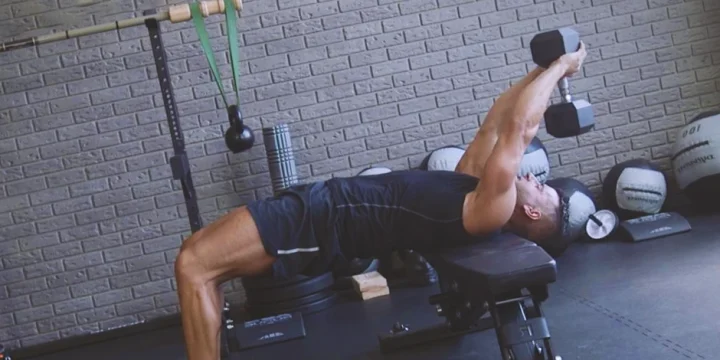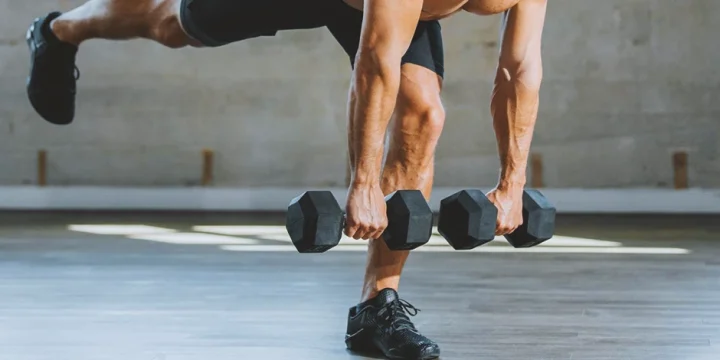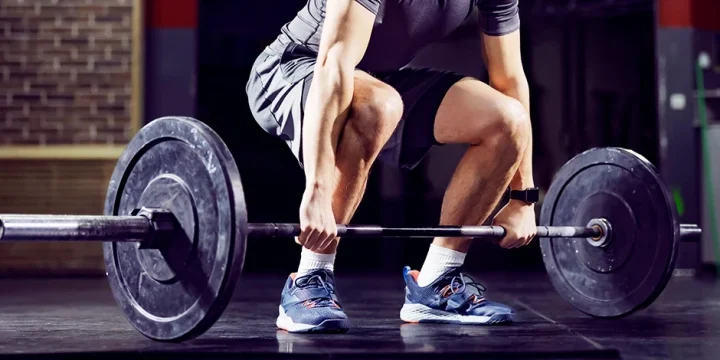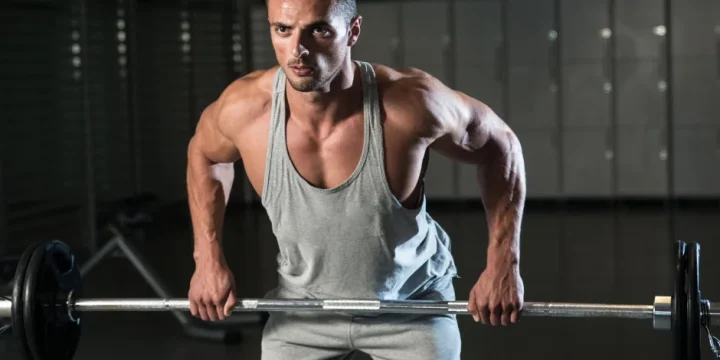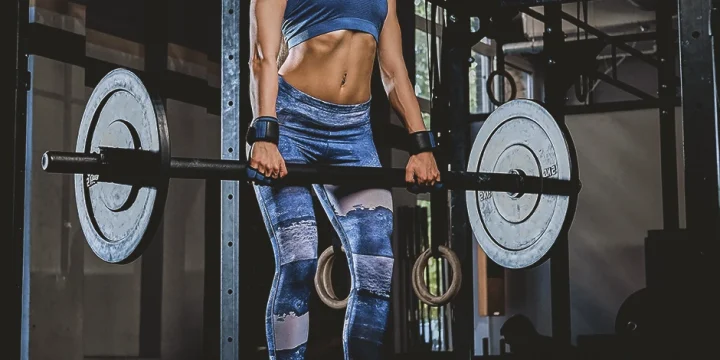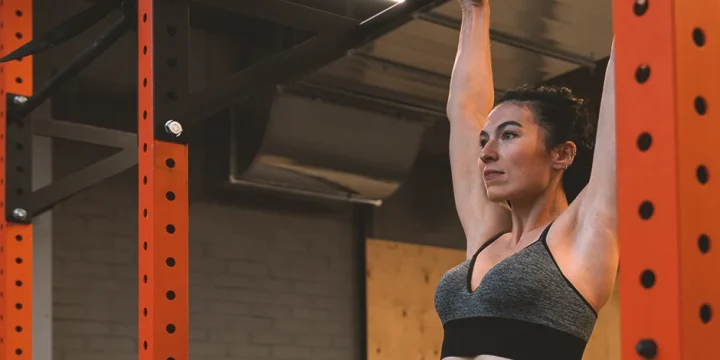As an experienced personal trainer, I've witnessed numerous clients struggle with the deadlift, often leading to improper form and potential injuries.
Recognizing this common issue, I'm compelled to share my expertise.
This article offers a comprehensive guide on executing a proper deadlift, complete with a detailed breakdown of technique and essential cues.
Whether you're a beginner or looking to refine your skills, these insights will ensure you deadlift safely and effectively, maximizing your strength training while minimizing risks.
I recommend reading our guide on the best barbells for your home gym so you can purchase a high-quality barbell product and start improving your technique and personal records.
Quick Summary
- To perform a deadlift or trap bar deadlift properly, you should keep your spine neutral as much as possible, assume a shoulder-width position with your feet, avoid lifting the barbell with your hips above the level of your shoulders, and pull the bar straight up without modifying the straight trajectory of the bar.
- Deadlifts target different muscle groups, where the prime movers are glutes, and synergists include quadriceps femoris, semitendinosus, semimembranosus, biceps femoris, and erector spinae (stabilizer).
- The International Journal of Exercise Science recommends 48–72 hours of rest between workout sessions exercising the same muscle groups.
- As a personal trainer, I've seen firsthand that incorporating deadlifts can be transformative for both physical and mental toughness.
How to Perform a Deadlift

Based on my experience as a personal trainer, here is how to deadlift with the proper form:
- Place the barbell on the floor and load it with sufficient weight after warming up so you can perform at least 6 consecutive reps without pausing.
- Assume a standing stance with the width between hip and shoulder-width apart according to height, morphology, and personal preferences.
- You can turn out your toes slightly and widen the original starting stance if you want to perform more of a squat pattern deadlift variation. Otherwise, stick with the shoulder-width recommendation and keep your toes looking straight ahead.
- Your shins should be 2–3 cm away from the barbell.
- Choose between overhand and mixed grip and grip the barbell around the shoulder, width apart, or a little wider.
- Bend in your knees to lower the hips below shoulder level so you enter the starting deadlift position.
- Ensure your back is flat in the bottom starting position and your knees bent only as much as you need since we want to perform more of a deadlift pattern instead of the squatting pattern. It's essential to engage your hamstrings and glutes effectively here, as they are key drivers in the upward phase of the deadlift.
- Your shoulder blades must be depressed, meaning you should pull them down with your traps.
- Start the exercise by pulling the loaded barbell upward by initiating the triple extension — simultaneously extending your ankles, knees, and hips (with the accent on extending your hips first).
- When you reach the top position with your knees almost fully extended, your hips neutral, and your ankles in a normal dorsiflexion position, hold it for one second.
- Drop the barbell on the floor and repeat the whole process.
- Repeat for 6 reps, 4 sets, and rest for 2-5 minutes between the sets to fully recover.
Main Deadlift Cues

Here are the main deadlift cues to learn and consider when performing the deadlift with proper technique and form:
- Bar path - looking from the side, a vertical line should be over your mid-foot. This is crucial for maintaining balance and ensuring the efficient transfer of force.
- Barbell - the barbell should be placed on the floor at the start of each rep over your mid-foot, 2-3 cm in front of your shins.
- Stance - a little narrower than the squat, meaning your heels should be hip/shoulder-width apart.
- Feet - the foot should be flat on the floor, and the toes turned slightly out for about 15 degrees.
- Grip width - the grip should be narrow and hands about shoulder-width apart.
- Grip - bar must be close to your fingers, thumbs around the bar, and both palms facing you.
- Arms - when looking from the front, they should be vertical and slightly inclined from the side.
- Elbows - locked during and before the pull until the lockout, and they should never be bent.
- Chest - avoid rounding your thoracic back by putting your chest up.
- Lower back - the back should be kept neutral with the normal lordotic curve. No excessive arching or rounding.
- Shoulders - looking from the side, your shoulders should be in front of the bar.
- Shoulder blades - over your mid-foot when looking from the side and ideally depressed downward.
- Head - your head should align with the rest of your spine without looking up or at your feet.
- Hips - hips should be higher than parallel, similar to the half-squat position.
- Setup - the barbell should be placed over your mid-foot, shoulder blades over the bar, and head and lower back in a straight line.
- Breathing - inhale deeply at the starting bottom, hold your breath at the top, and exhale at the bottom.
- Way up - never jerk the bar off the floor; only pull slowly and with control once the bar reaches the knee level.
- Way down - your hips should be back first, and start bending your legs once the bar reaches the knee level.
- Between reps - rest for a second, never bounce, and ensure your chest is held up.
- Lockout - lock your hips and almost fully extend your knees. Don't excessively lean back in the top position.
"Of all the exercises out there, few engage as many muscles and reinforce proper movement like the deadlift."
- Jake Boly, Certified Personal Trainer
Learn More: Do Deadlifts Increase Testosterone
Muscles Worked
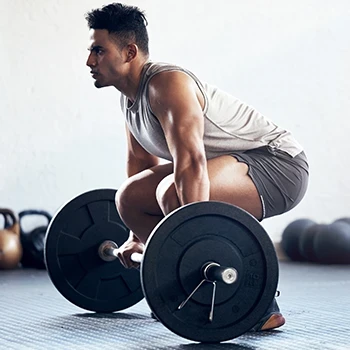
The deadlift targets both front and back muscles throughout your body. As a personal trainer, I've observed that the glutes are the primary drivers in this exercise, engaging the gluteus maximus, medius, and minimus significantly.
Supporting muscles, such as the biceps femoris, semitendinosus, semimembranosus, quadriceps femoris, gastrocnemius, and soleus, assist in the movement. The erector spinae and core muscles like the erectus abdominis and obliques provide stability.
Upper body muscles, including the latissimus dorsi, posterior deltoids, trapezius, and rhomboids, are crucial for energy transfer. Muscle activation varies based on individual body structure, technique, and limb length.
Research, including a study by the Public Library of Science, shows that technique modifications can lead to more quadriceps activation than gluteal in some people [1].
Full Breakdown of Deadlift Technique

Below is the full breakdown of a deadlift technique.
Stance
For a proper stance, keep your heels hip-width apart. This spacing allows room for your arms, preventing interference from your legs during the lift.
Related: Deadlift Stances: How to Choose, Benefits and Common Mistakes
Feet
Position the bar over your mid-foot, the balance point, to enhance stability and ease the lift.
Grip
Opt for an overhand or mixed grip. Hold the barbell about shoulder-width apart, aligning your arms vertically when viewed from the front. A narrower grip can increase your lifting capacity.
Arms
Keep your arms vertical from the front view to minimize the bar's travel distance. Lock your elbows and straighten your arms before lifting the barbell.
Bar
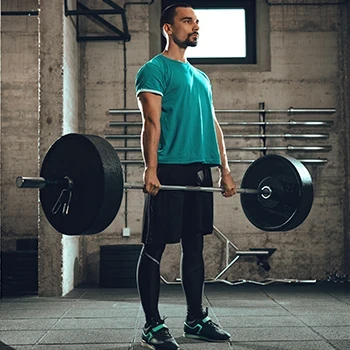
Back Angle
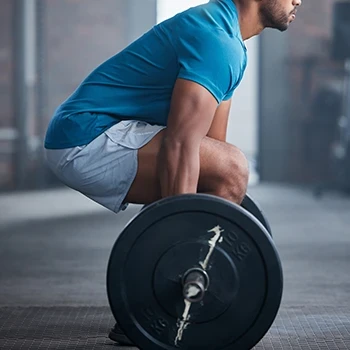
Lower Back
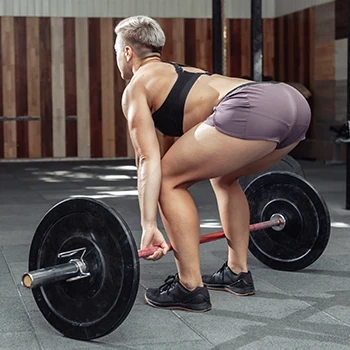
As a personal trainer, I always emphasize on having a neutral lower back throughout the deadlift, preserving your spine's natural lordotic curve.
Upper-Back
Keep your upper back neutral, maintaining the thoracic spine's kyphotic curvature without excessive rounding to prevent upper back injuries.
Head
Align your head with your spine, as if standing straight. Maintain this angle between your head and upper back during the lift, avoiding bending or extending your neck.
Setup
Proper setup includes the bar over your mid-foot, shins close to or 2-3 cm from the bar, depressed shoulder blades positioned above the bar, and a neutral spine throughout the movement.
Neglecting these aspects disrupts the force transfer between your lower and upper body, affecting the bar's trajectory.
Way Up
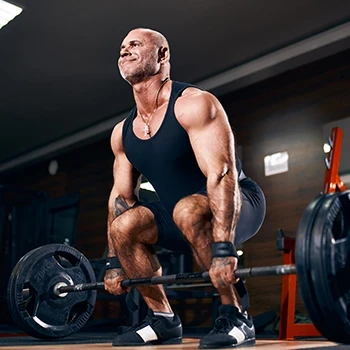
Breathing
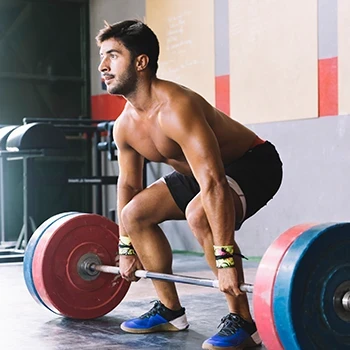
Research from the National Library of Medicine highlights the importance of proper breathing in all exercises, including deadlifts [3].
Diaphragmatic or 'belly breathing' is especially beneficial for core stabilization and spinal alignment in deadlifts.
Inhale before lifting the bar, hold your breath during the lift and exhale when lowering the bar. This technique enhances lower back strength and safety by increasing intra-abdominal pressure.
Between Reps
Place the weight on the ground for a 'dead' stop between reps, ensuring it's still before each lift. Rest for a second or two between repetitions.
As a personal trainer, I've found this approach helps clients maintain form and focus during their sets.
"Everyone should deadlift. If you’re a strength athlete, deadlifts (and their many variations) are non-negotiable. Bodybuilders who train to gain muscle and improve the quality of their physiques can also use the deadlift to develop their posterior chains."
- Terry Ramos, Certified Personal Trainer
Deadlift Variations

There are many deadlift variations, and most of them have similar biomechanics. Still, muscle activation patterns and range of motion significantly differ, as per a 2019 report published on Research Gate [4].
As an experienced fitness coach, I always emphasize progressive overload, which involves incrementally increasing the training volume and intensity in each subsequent workout session. This approach is endorsed by the European Journal of Applied Physiology highlighting its effectiveness in enhancing physical fitness [5].
Also, follow the rest recommendation by the International Journal of Exercise Science of 48-72 hours between exercising the same muscle groups again [6].
Related Posts:
Sumo Deadlift
Sumo deadlift is the variation that will further activate your adductors by widening the original feet width.
How to Perform a Sumo Deadlift
- Load the barbell on the floor with the appropriate weight so you can perform 8 sumo deadlift reps.
- Assume a stance wider than shoulder-width apart and slightly turn your toes outward.
- Grip the barbell between your legs, and keep your chest up and back flat.
- Start the exercise by extending your ankles, knees, and hips.
- Stop at the top position for one second.
- Return the barbell to the floor and repeat.
Related: Sumo vs Conventional Deadlift: Strength Battle Unveiled
Trap Bar Deadlifts
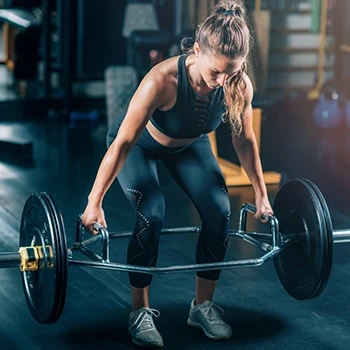
Trap bar deadlift is the modified variation that will activate anterior and posterior chain muscles almost equally.
How to Perform a Trap Bar Deadlift
- Load the trap bar with the appropriate weight to perform up to 8 reps without pausing.
- Enter the hex bar and assume a standing stance slightly wider than the hip-width position with your toes slightly turned outward.
- Grip the handles neutrally, and keep your back flat, chest up, and hips below shoulder level.
- Start the exercise by pulling the hex bar up to the standing position.
- When you reach the top position, lock your hips and hold for one second.
- Reverse the motion to return to the starting position.
- Repeat for 8 reps, 4 sets, and rest for 2-5 minutes between the sets.
FAQs
Should You Feel Deadlifts in the Lower Back?
You should feel deadlifts in the lower back because the lower back muscles, the erector spinae, act as stabilizers to the whole deadlift exercise. Proper deadlift form requires maintaining a neutral spine position, but that doesn’t mean your back muscles won’t be targeted and “felt” during the conventional deadlift movement.
Do Beginners Need to Deadlift?
Yes, beginners need to deadlift. However, beginners should use regressive exercises to the conventional barbell deadlift, such as the Romanian, banded, or dumbbell deadlift, to learn the proper form before lifting heavy weights.
Is It Ok if I Don’t Deadlift?
It is ok if you don’t deadlift. However, to build strong posterior chain muscles, you must incorporate the deadlift with proper form, regardless of the deadlift exercise type.
References:
- https://journals.plos.org/plosone/article?id=10.1371/journal.pone.0229507
- https://uknowledge.uky.edu/cgi/viewcontent.cgi?article=1091&context=khp_etds
- https://www.ncbi.nlm.nih.gov/pmc/articles/PMC8967998/
- https://www.researchgate.net/publication/337670594
- https://link.springer.com/article/10.1007/s00421-010-1735-9
- https://www.ncbi.nlm.nih.gov/pmc/articles/PMC6719818/
About The Author
You May Also Like
